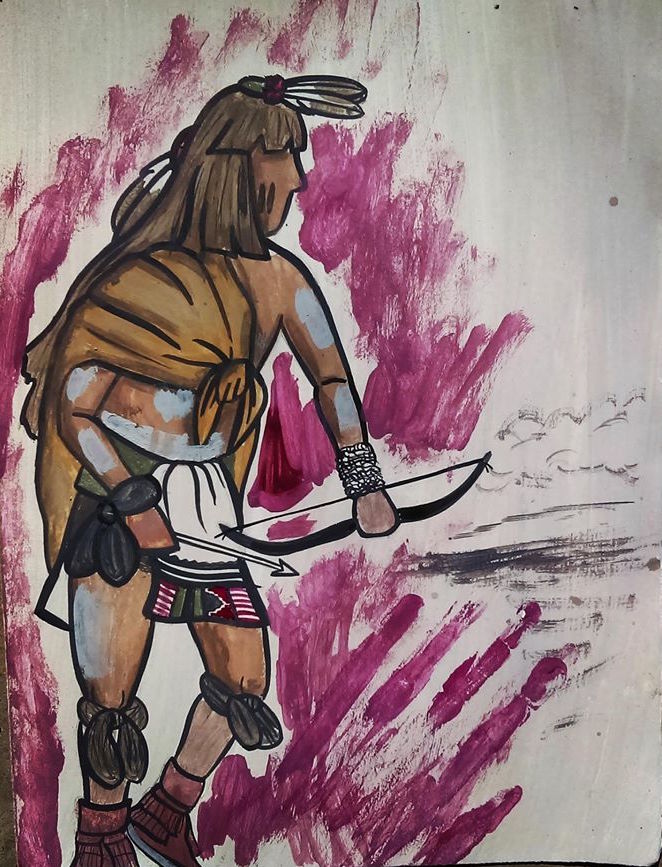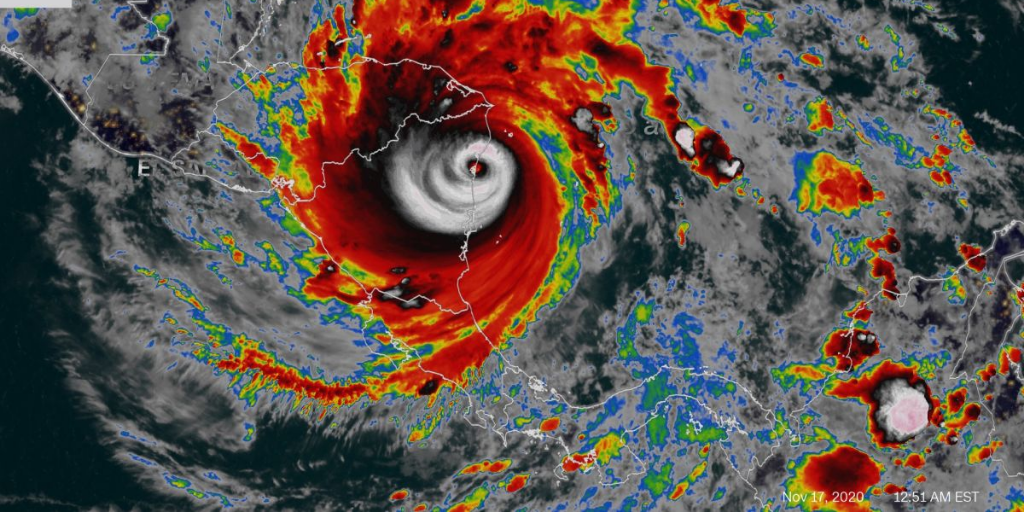
by Jennifer Marley
Jennifer Marley is from the San Ildefonso Pueblo and is a student at the University of New Mexico pursuing her bachelor’s degree In Native American Studies. She is the Vice President Of UNM’s Kiva Club and a lead organizer with The Red Nation.
Far too often the story of Pope’ and the Pueblo Revolt is depoliticized, which is fascinating because watering down a successful anti-colonial rebellion takes effort given its centrality to Pueblo existence today. Even Native People tend to think of the Revolt of 1680 as something that stands alone in time, and words like “revolutionary” are seldom used to describe its leader Pope’ and all those who fought in the Revolt — but that’s what they were: revolutionaries. What happened leading up to the Revolt and what happened afterwards when the conquistadores returned are also seldom discussed. Those details play a key role in understanding why and how the Revolt is relevant today.
The first big misconception is that the violence inflicted upon Pueblo People was because of our refusal to convert to Catholicism. Although partially true, this narrative frames the conflict as a “clash of cultures,” a common myth used to describe first contact between Europeans and Indigenous people worldwide. The clash of cultures narrative holds that Natives and settlers were unable to get along because their cultures were just too different and the primary disagreement was religion and culture. Reducing first contact to a clash of cultures fails to acknowledge the true intention and goal of colonizers: unrestricted access to territory, resources, and Native bodies. When the Spanish conquistadores made contact with the Natives of the Southwest, they were looking to eliminate us, not to simply convert and enslave us, but to remove us from the land permanently.
Considering that the Spaniards were weak, hungry, and on the verge of death upon making contact with Pueblo people, they did not immediately descend upon us in a shower of violence. In fact they begged for our help, and being the generous people we are that is what they got. It was not long before their genocidal intentions were made clear. Accompanying the unyielding raids, rape, and indiscriminate killing of Pueblo people, medicine people, women, and Two-Spirit people were victims of especially heinous acts of torture which included being burned alive and cutting off the breasts of women. In 1675 when hunts for tribal leaders and medicine people were in full swing, Pope’ began organizing the most prominent revolution in Pueblo history. It is important to note here that the Pueblo Revolt did not occur spontaneously because people were fed up with the violence and oppression they were experiencing — this is another myth. This myth ignores the way we commonly understand the political development of such uprisings. At least five years of intense organizing had to take place before the Revolt could be successful. This kind of organizing required the support and participation of entire Pueblo communities and, most importantly, a common understanding of the social and political climate, which meant identifying a common enemy — the Spanish colonial regime.
Taking into consideration the extreme material conditions that the Pueblo Revolt of 1680 arose from, it was not terribly complex to reach the common consensus that a full blown revolution was needed, especially considering the fact that at the time communal social structures were still intact, lessening the divisive attitude that is all too common in most Native communities today because of centuries of colonization. We live under the conditions that our ancestors were looking to escape, and our disassociation from the true spirit of the Pueblo Revolt is the desired result. In order to understand our present material conditions, we first need to understand that Pueblo communities have a deep and radical historical tradition of resistance. Our resistance was against Empire — it was against settler colonialism. Yet, the way New Mexico history is told today, it would have us believe that there was a consensus reached when the conquistadores returned with cannons twelve years after they were pushed back to El Paso. The consensus was that Pueblo People welcomed back with open arms the brutal colonizers.
The truth is that there was not the slightest bit of consent from the Pueblo people upon the colonizers’ return because the Spanish would continue violence and killing unabated. After witnessing the power of a highly organized revolt, the Spaniards were willing to make slight concessions, most notably allowing ceremonies to continue if they were done to worship Catholic saints. A result of this was the creation of feast days and the renaming of many of the Pueblos after saints. But there was nothing peaceful about the second coming, or what is known popularly as “the bloodless re-conquest” or Reconquista. In the years that followed the return of the conquistadores, there was the massive expropriation of Native lands and resources under the semi-feudal structure of land grants and peasant labor. As a result of Spanish slave trading, countless Natives were detribalized in the areas that are now present day border towns and sold to Spanish families to be raped or to work as slaves, or both. They were detribalized because their tribal identities from one of the many Native Nations in the region (the Comanche, the Apache, the Navajo, the Utes, and the Pueblos) were stripped from them as they took on Spanish surnames and became a landless population forced into slavery or peonage.
It was this detribalization of Native people that resulted in a “new class” of citizens, a class now capable of being “bred white”, and thus the birth of the imaginary Nuevo Mexicano identity is born. When Native identity is deemed something that can be diluted, the settler now has a pathway to becoming the dominating class and race. The “Hispanic” or “Spanish American” racial identity was a fiction created to make New Mexico appear “white enough” to join the U.S., since both identities privileged a European or Spanish heritage even if the population was mixed or descended from detribalized peoples. New Mexico’s statehood was delayed until 1912 because white Anglos felt the territory did not possess a white majority, so a new “race” of whites had to be created. The standards for Native and Hispano identity were literally created to uphold an ideology, a logic of elimination, the elimination of Native peoples in this area and the violent histories of Spanish slavery as well as brutal American occupation.
According to our present reality, Pueblo people have been indoctrinated in such a way that tells us we will be rewarded if we remain civilized Catholics who do not disrupt the status quo. When U.S. colonialism began in the Southwest, Pueblo people were the only tribe deemed “civilized,” as opposed to “savage” and “nomadic” Natives, because the Pueblos had sedentary agricultural life ways. (A common myth is that Native peoples were primarily nomadic and therefore did not possess ownership over the land as understood by European law.) In the popular imaginary, Pueblos were, and still are, privileged as a class just below the fictional “Hispanic” identity. As a result, Pueblo People are objectified by culture consumers and exploited by the Indian art industry as a “timeless” peoples — in other words, a people without history. In spite of this, many Pueblo people still depend on that same industry for bare survival. The opportunity for a little status in dominant culture is always dangled in front of us, and unfortunately it is something that some aspire to. As that colonial ideology prevails, Pueblo people remain under attack by the extractivist industry through fracking and uranium mining, the expansion of border towns and the violence that exist within them, violence on reservations, addiction, high suicide rates, and the common slew of settler colonial pathologies that effect all people living under occupation
The question remains then, as Pueblo People, how do we develop a common political consciousness around our unique history and present situation? The first step, I believe, is looking at the Pueblo Revolt of 1680 and understanding that its significance is not just reserved for the year 1680. Our sacred way of life will always be under attack and diluted as long as we live under a state where the prevailing ways of thinking and behaving serve settler interests first and foremost. To celebrate Pueblo resistance as just a fleeting memory is contrary to combating the settler state today, and we cannot begin to take on the various issues that crush and kill us in our communities unless we name the systems that uphold them: settler colonialism, capitalism, and imperialism.
Subscribe: